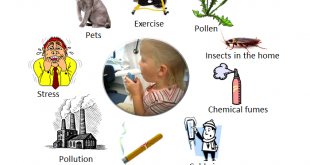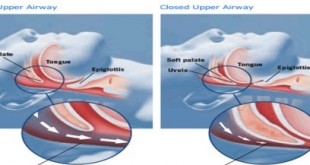Occupational asthma is asthma caused by or worsened by exposure to substances in the workplace. Many substances in the workplace can cause occupational asthma. The most common triggers are wood dust, grain dust, animal dander, fungi and certain chemicals. The true frequency of occupational asthma is not known as many cases are not reported. Published reports estimate that occupational asthma may account for about 9-15% of adult onset asthma.
At-Risk Populations
The following workers are at higher risk :
- Paint sprayers
- Bakers and pastry makers
- Nurses
- Chemical workers
- Animal handlers
- Welders
- Food processing workers
- Timber workers
Signs and symptoms of occupational asthma
Symptoms
Symptoms of occupational asthma include coughing, wheezing, chest tightness and shortness of breath. Eye irritation, nasal congestion, and/or runny nose may also be present. This can be allergy related or an irritant reaction from exposure to triggers in the workplace.
In generally, occupational asthma should be considered if the asthma symptoms are worse on working days, improve when workers are at home for any length of time (weekends, vacations) and then recur when they return to work.
Signs
The health care provider has to ask questions about the patient’s medical history and perform a physical examination. The patients’ symptoms may have a pattern of getting worse with a certain workplace environment or substance.
The health care provider may hear wheezing when listening to the chest with a stethoscope.
Tests
The following tests may be done if indicated :
- Serial measurement of peak respiratory flow rate (PEFR)
- Chest x-ray
- Complete blood count
- Pulmonary function tests (spirometry)
- Skin prick tests or blood tests for specific IgE
- Bronchial provocation test (assessing airway hyper-responsiveness to the suspected allergen)
As a general rule, the history is more useful in excluding occupational asthma. A significant proportion of workers with symptoms that improve on days away from work or on holiday have occupational asthma.
Complication
Prognosis for workers with occupational asthma is worse for those who remain exposed for more than one year after symptoms develop compared with those who are removed from the exposure earlier. If occupational asthma is not correctly diagnosed early and the workers are not protected or removed from the exposure, it can cause permanent damage to their lungs.
Furthermore, adults with occupational asthma may find seeking employment more difficult than adults with non-occupational asthma.
Treatment
The main aim of management is to identify the cause and remove the worker from exposure if possible.
Avoiding exposure
Avoiding exposure to the substance that is causing occupational asthma is the best treatment. Strategies include :
- Change jobs (the best option)
- Relocation by moving the workers to a different location where there is less exposure to the substance
- Using a respiratory device (personal protective equipment) to protect or reduce the exposure
Medications
Asthma medicines (especially inhalers) may help the patient to manage their symptoms. These include :
- Asthma reliever drugs – to relax the muscles of the airways and to improve the acute symptoms.
- Asthma controller drugs – to be taken every day to prevent asthmatic attack
Occupational asthma may get worse if the workers continue to be exposed to the substance that is causing the asthmatic attack, even if the medicines may help to improve the symptoms.
In general, the outcome for people with occupational asthma is good with early diagnosis and early avoidance of further exposure. It offers the best chance for complete recovery.
Prevention
Preventing asthma symptoms by reducing exposure to the triggers at work is the most important step the worker can take to reduce the occurrence of occupational asthma. It is also important to use appropriate asthma medication to prevent and control symptoms. If in a particular job, exposure to asthma triggers is unavoidable, the employers have to assist the employee in finding a more suitable workplace.
 PENDIDIKAN PESAKIT Kementerian Kesihatan Malaysia
PENDIDIKAN PESAKIT Kementerian Kesihatan Malaysia

